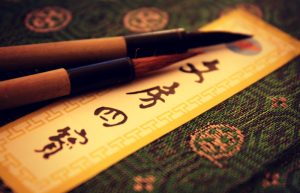The Problem: Why do we procrastinate instead of getting things done?
The Science: Our mind is highly distractable, but there is an answer!
Solution: With the 20-Second Rule, you’ll get things done, done right, and done now!
In his book The Happiness Advantage, Shawn Achor, the lecturer of a popular course on happiness at Harvard, tells us how he wanted to read more books and watch less TV. The intention was good, but after a long day at work, he arrived home and slumped onto the sofa. “I’ll start reading soon,” he thought while picking up the remote control – and before he knew it, two hours had passed.
He realized that the problem was the 20-second threshold that separated him from the books and decided to reverse the situation. He took the batteries out of the remote control and placed them in a drawer in the bedroom so that it would take him exactly twenty seconds to get them and put the TV on. On the other hand, he placed some carefully selected books within arm’s reach from the sofa. This small modification completely changed his home routines: Suddenly, when he was tired on the sofa, the easiest option was to read, and the harder option was to watch TV. Accordingly, he found himself spending the evenings reading and very rarely made the extra effort to pick up the batteries to be able to watch TV.
Thus, the 20-Second Rule was born.
Twenty seconds sounds like a trivial time, but it can completely change how you spend the next two hours. Often, the barrier to good intentions becoming a reality can be as small as those twenty seconds. If you are able to design your environment so that the good routine is twenty seconds closer than the bad routine, you can dramatically increase your chances of doing it.
For example, a morning visit to the gym can fail because while you are still half-asleep, choosing of the right T-shirt can seem like an insurmountable obstacle. Choose your clothes the night before, and the odds of really getting to the gym are much better. Or take it to the next level like Shawn Achor did when he wanted to start a jogging routine: Sleep with your jogging clothes on (ask permission from your spouse first) and with your jogging shoes next to the bed. This way, when you wake up, you are already on your way.
Myself, I found the 20-Second rule indispensable last summer when I trained for my first marathon. By choosing the clothes and other necessities the day before, I smoothed the path from intention to action.
And don’t believe only me or Shawn. Research has shown the dramatic differences these insignificant time barriers can make. In one study, for example, researchers went to a café and closed the transparent lid of an ice cream freezer, thus introducing a tiny barrier between the customers and the ice cream. The result: the amount of ice cream bought from the café dropped to half.
The takeaway: Whatever you want to accomplish, start by having a long and hard look at your environment. How could you design it so that the temptation is 20 seconds further away and the good behavior 20 seconds closer than before?




